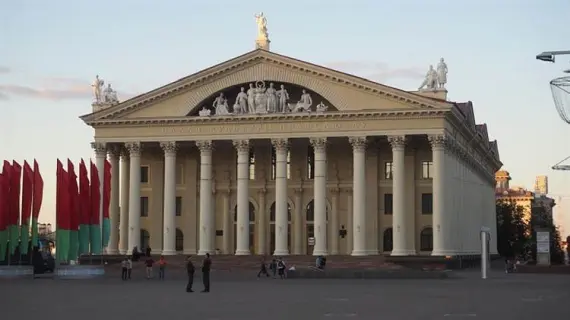Minsk - Buses and Buses - Transportation - Attractions and Sightseeing
MINSK

Minsk is the capital of Belarus, located on the Svislocha River, in the southeastern part of the Minsk Plateau.
southeastern part of the Minsk Plateau. The metropolis is currently inhabited by
currently more than 1.9 million people. The city is the administrative, economic and
cultural center of the country. It is the seat of the Secretariat of the Commonwealth of Independent
States.
Minsk - tourist attractions, monuments and history of the city. What is worth seeing?
Although many Belarus is associated with dictatorship and an oppressed nation the truth is somewhat different. It is a peaceful and beautiful country with much to offer. As our neighbor, also thanks to the liberalization of visa regulations, it is opening up to us and increasingly more boldly invites us to a land full of tranquility, where it is worth spending some time.
Minsk is a very clean city, like few others. Relatively little automobile traffic and the strong breeze of the city, located on a plain city makes the air exceptionally clean, compared to other more widely known capitals.
The city was completely destroyed and completely re rebuilt. Like Warsaw, ruined and maimed, Minsk has risen from its knees. The historic face of Minsk is mostly a reconstruction.
In its history, Minsk has been conquered many times, destroyed and burned due to which many valuable and historic buildings have disappeared irretrievably from the city's skyline. Nevertheless, it is worth strolling through the backstreets and find remnants testifying to Minsk's former power. The heart of the city is vast Independence Square, where the seat of government is located, Belarusian State University, the Minsk Hotel, the main post office building main post office, the Church of St. Simon and St. Helena, known as the Red Church, and the monument to Vladimir Lenin.From the square diverges from Independence Street, founded after World War II, which today is the main promenade of the city. Its buildings mainly represent the Socialist Realist style.
Other important monuments of the city include the 17th century Archcathedral of the St. Mary's Cathedral, the Orthodox Church, built in the mid-19th century St. Mary Magdalene's Church, the Yanka Kupala National Academic Theater, the classicist City Hall building, St. Roch's Church, built in 1861-1864, Built in the first half of the 19th century, the classicist Piszczalowski Castle (now housing a prison), and located in the suburbs of Minsk - the 18th century Vankovich Palace. Opposite the oldest part of the city, on the Svisloch River is the famous Island of Tears, which is now a place dedicated to soldiers killed in the Soviet Afghan campaign (1979-1988). While visiting the city, it is also worth going to the historic Calvary Cemetery Calvary Cemetery where victims of Soviet terror (including Poles). Resting here, among others, is Polish painter, graphic artist and lecturer at the University of Vilnius - Jan Damel (1780-1840) or a Belarusian politician, professor of the Warsaw University of Technology and mayor of Minsk - Waclaw Iwanowski (1880-1943).
Minsk - buses and vans. Transportation to and from Minsk
The bus stop is located at the Central Bus Station, 6 Babruisky St. You are welcome to board the buses!
Are you interested in the city description? Check the details of connections from your town in the search enginena stronie głównej.
MINSK - list of coach stops:
- Dw. autobusowy Centralny, ul.Babrujska 6
- Dw.autobusowy Centralny,ul.Bobruiskaya 6,stan.nr 1
- Lotnisko1 Minsk ul Czkalowa
- Centrum Bus Station, stan. 10, ul. Bobruiskaya 6
- Centrum Bus Station, stan. 11, ul. Bobruiskaya 6
- Centrum Bus Station, stan. 4, ul. Bobruiskaya 6
- Centrum Bus Station, ul. Bobruiskaya 6
- Dw. autobusowy Centralny, ul.Babrujska 6
Stops of other carriers:
MINSK - list of international connections:
© 2025 Sindbad
Technical support, assistance, payments: Sindbad IT
© 2025 Sindbad
Technical support, assistance, payments: Sindbad IT
